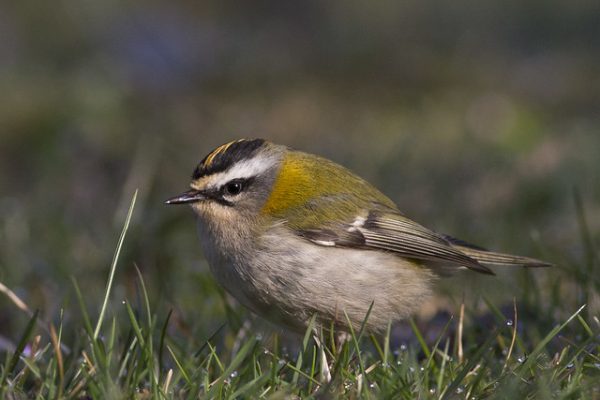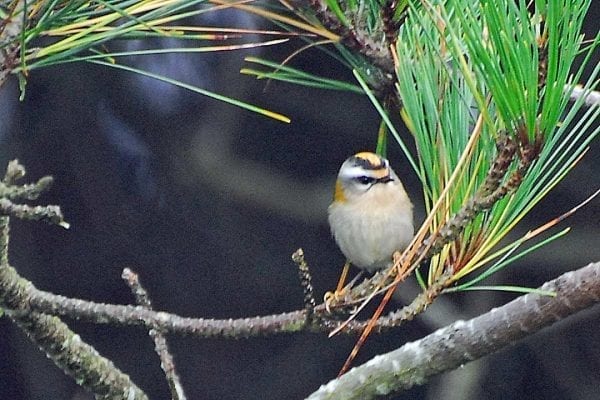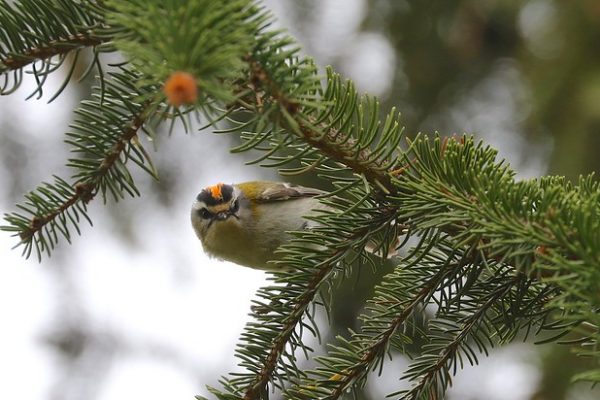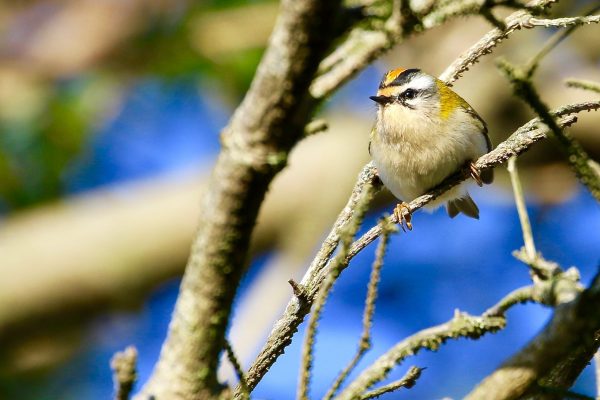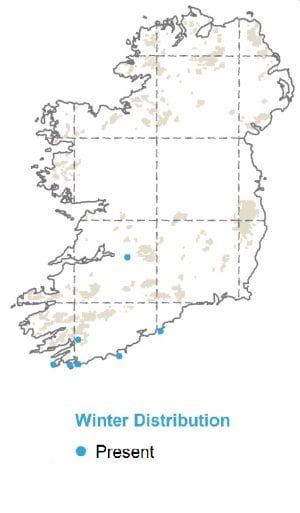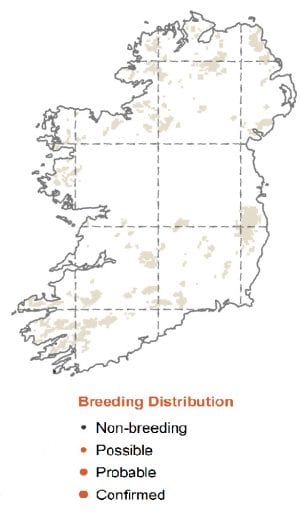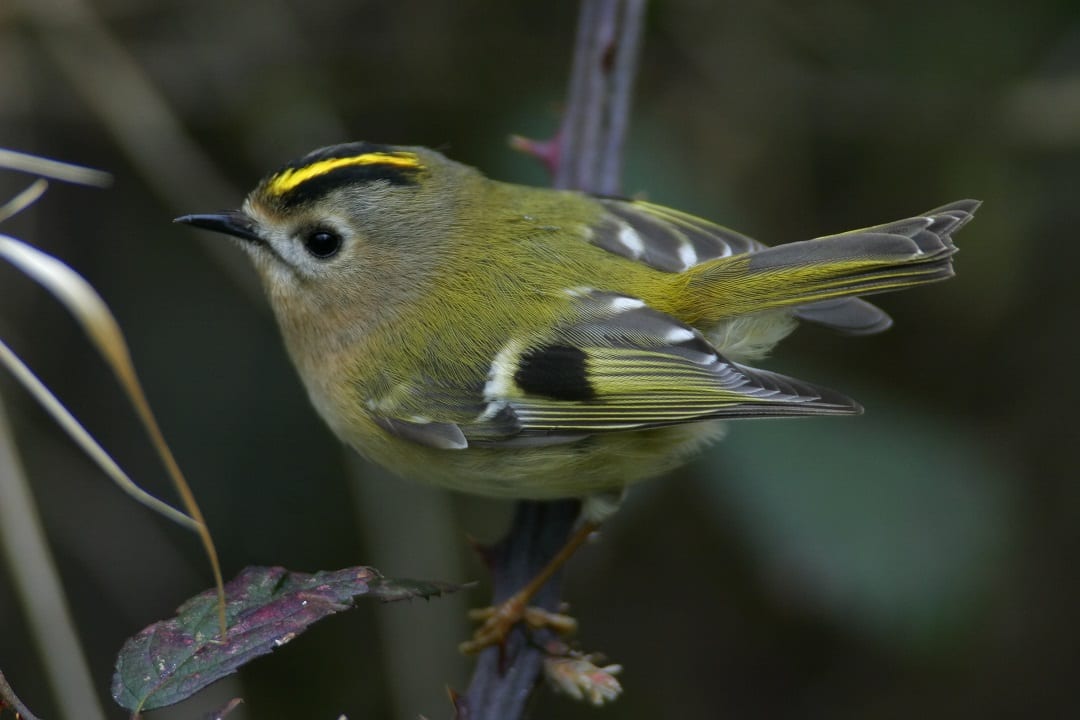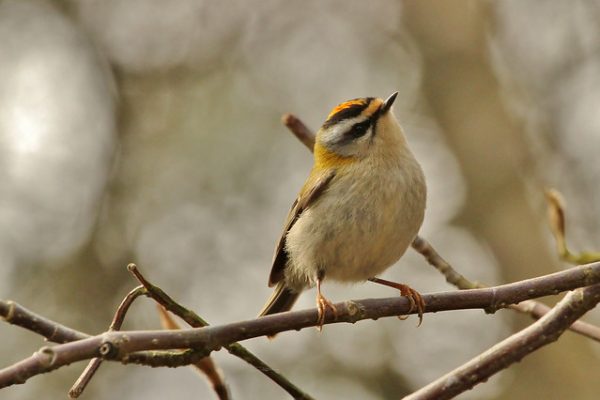
Firecrest
| Irish Name: | Lasairchíor |
| Scientific name: | Regulus ignicapillus |
| Bird Family: | Warblers |
green
Conservation status
Conservation status
Status
A scarce migrant in spring and autumn to headlands along the south and east coast of Ireland.
Identification
Tiny, about the same size as Goldcrest. Similar behaviour to Goldcrest - very active when searching for food in vegetation. Differs mainly in the patterning of the head from Goldcrest and a good view is required to separate the two species. Adult male Firecrests have a bright orange crown, bordered by thick black stripe on either side. Has broad white supercilium, black eyestripe and another thin white stripe below the eye. The face is otherwise grey with an orange smudge along nape. The back is green, slightly paler than on Goldcrest. Adult females have a bright yellow crown, but do not otherwise differ from males. Juveniles have a plain greenish-grey head, with a greenish supercilium.
Voice
Main contact call is very similar to that of Goldcrest, but tends to be more uplsurred "zit zit zi-zi". The song is a high pitched note quickly repeated and is unlikely to be heard in Ireland.
Diet
Feeds almost exclusively on insects and other invertebrates.
Breeding
Does not breed in Ireland. Rapidly increasing breeding population in Britain and potential colonist to Ireland in near future. Near endemic to Europe, with only small numbers breeding in North Africa and northern Turkey. In Continental Europe, breeds in larger parks and gardens, as well as deciduous woods. Less frequently in pure conifer stands.
Wintering
Firecrests breeding in Central Europe winter in southern Europe and North Africa. Occurs as a passage migrant in Ireland in autumn (only a few spring records) at headlands along the coast.

